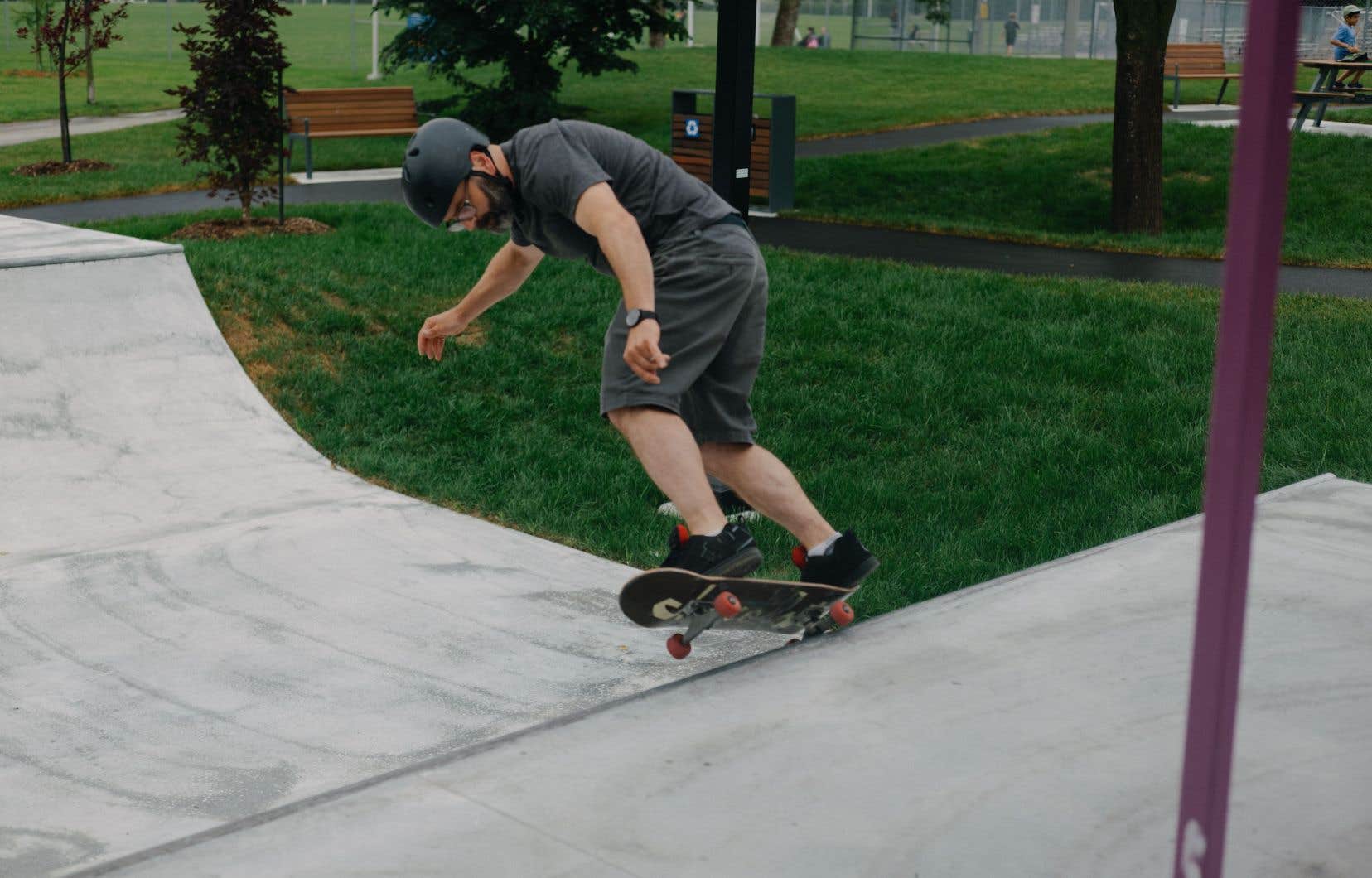Olympic athletes have something to impress with their extraordinary physical abilities. Subjected to intensive training, they reach a high level, at a very young age for some. Even if it seems difficult, it is not impossible to get started in a sport that fascinates us on the screen these days, on the occasion of the Paris Games. For adults, it can even be an excellent idea. To start or to get back into it.
There is no age for the skate. Talk to Mike Lavoie. The 60-year-old athlete is one of the founders of one of Canada’s first skateboarding clubs. Like him, many veterans took a break after their teens, only to find their adrenaline fix many years later. The dozens of skate parks brand new buildings built across Quebec in recent years have contributed greatly to this revival.
Mike Lavoie was only 27 years old and the media were already calling him an “old hand.” His group of friends from Sept-Îles founded the “oldest club in skate in Canada” in 1980. The duty did not find an older one. “We had no structure, no place to “skate”. But we had magazines to see in photos the tricks ” he says.
Everything had to be built at the time. He had to build the park of his dreams with his own hands. “We were always like a family, building ramps and making places to skate, because for cities, it didn’t exist, the skate parks. It wasn’t a sport. It was a fad. It wasn’t official. Why would they give us a park if it was underground ? »
He left his hometown when he was just out of his teens. The lack of suitable space in Sherbrooke, his new adopted city, put an end to his practice. Not to his passion, as he is one of the most old school from Quebec (he is still older than Tony Hawk, the famous 56-year-old American snowboarder).
It was only after he moved to Montreal that Mike Lavoie regained his momentum. “At one point, everything fell apart. I found myself all alone. But, being the maniac that I was, I built a ramp in my yard,” he says. This ramp, which was somewhat incongruous in the metropolis, caught the attention of skaters Montrealers keen on new structures to “ride”. A new group formed and, since then, has been riding all over the island. These fans even travel to Florida or California for this sport.
Mike Lavoie may be getting older, but nothing is stopping him from still riding frequently, even with a nasty injury and a slightly more tired cardio. Never without his protections, that said.
“A few years ago I fell and broke my solid hip. I had a good seven months of living with that. And when I started skating again, it was painful. The price you pay for riding is higher.” […] And the other part of old age is your responsibilities. After my [fracture de la] hip, my girlfriend told me: “If you hurt yourself again in skateI’m not going to be your nurse. You’ll figure it out.” That makes you think a little! But it’s not enough to stop me. I like it too much.
New parks, old fans
Montreal skateboard parks were getting tomatoes just 10 years ago for their poor design. Rough asphalt, bumpy transitions and bowls designed by pool manufacturers had long sapped the resolve of skateboarders. Those days are over.
Skateboard parks developed by skaters have sprung up all over Montreal in the last four or five years. Verdun, LaSalle, Ahuntsic, the excellent Olympic Park: the list is long. The same goes for the regions. In fact, Saint-Georges (in Beauce), Victoriaville, Magog and even villages in Abitibi have or will soon have a brand new park.
Quebec owes this revival in part to veterans like Evan Thomson. The Montrealer originally from Halifax participated in the design of the park in the Côte-de-Neiges–Notre-Dame-de-Grâce borough, which is scheduled to open next year. “I say I’m doing this for the young people, but I’m actually doing it for myself,” the 38-year-old veteran says, laughing into his graying beard. THE Duty met him on the ramp of Dorval Park, the newest of Montreal’s parks, opened last June.
“Here, there is a beginner section, an intermediate area and a more advanced one. You can ride without getting in the way of others. The people who make parks now have real designs. The flowthe course and obstacles are all adjusted.
A sports enthusiast in his youth, he abandoned, like many others, kickflips when he landed in adulthood. He picked up his old board again during the lost hours of the pandemic. skate parks were then a good place for those who wanted to get out of their homes in peace. The renovation of the local park certainly encouraged him to get back into this extreme sport. “Parks like this make a big difference,” he confirms.
The descents started at a height, “it helps” when the legs grow less than before. The “transition” courses, less focused on acrobatics, encourage a practice lightened in shocks, gentler for the aging joints.
The sport has aged, but it is no less coolaccording to him. “More warming” and “more calcium” allow him to ride without fear. Maybe he has forgotten some tricks with age, but not the “ways to fall.”
“I remember that.”
